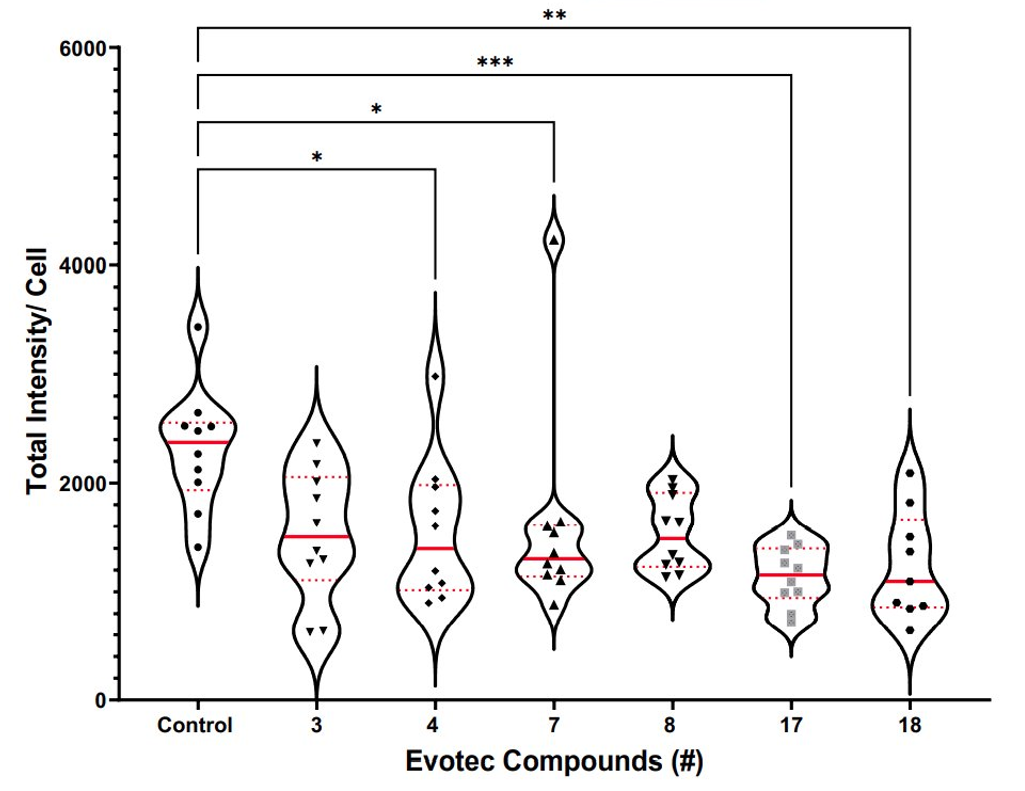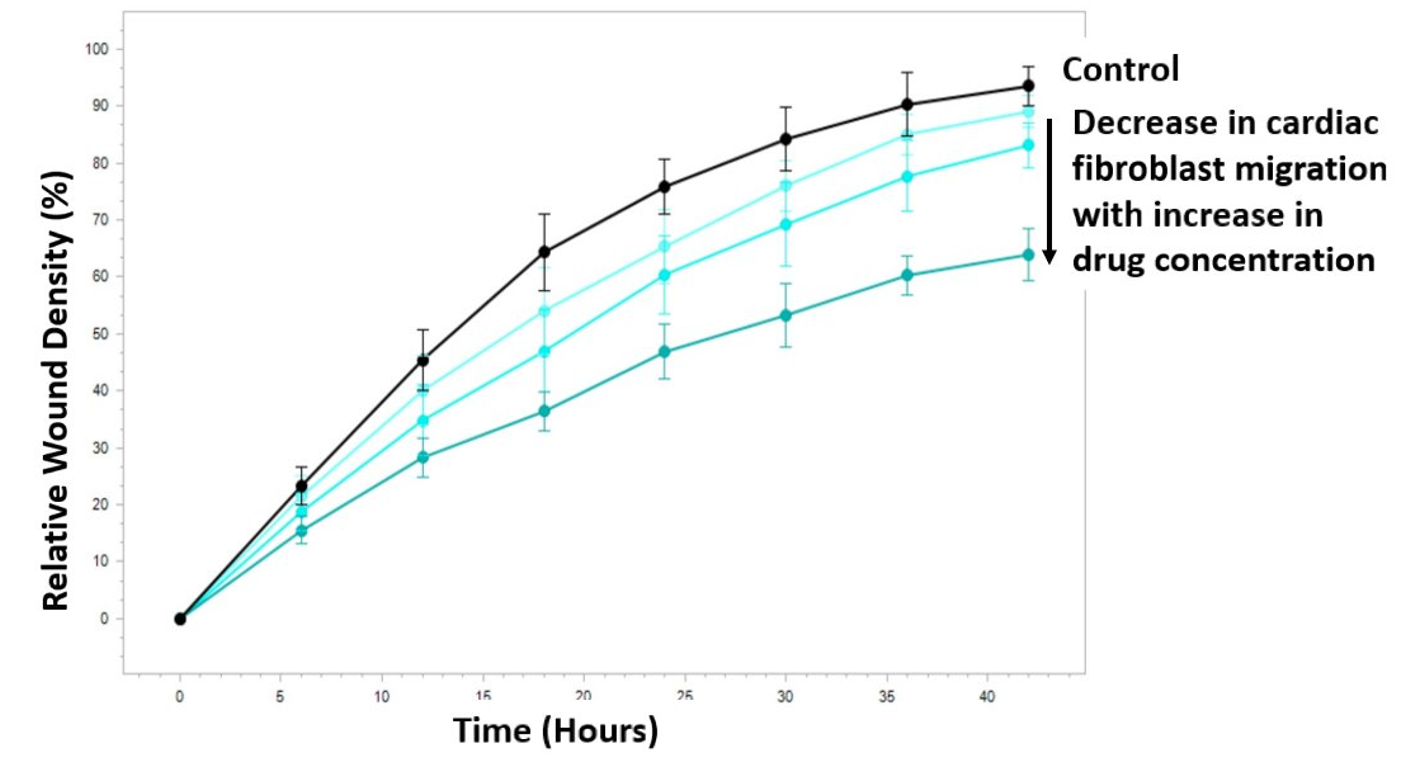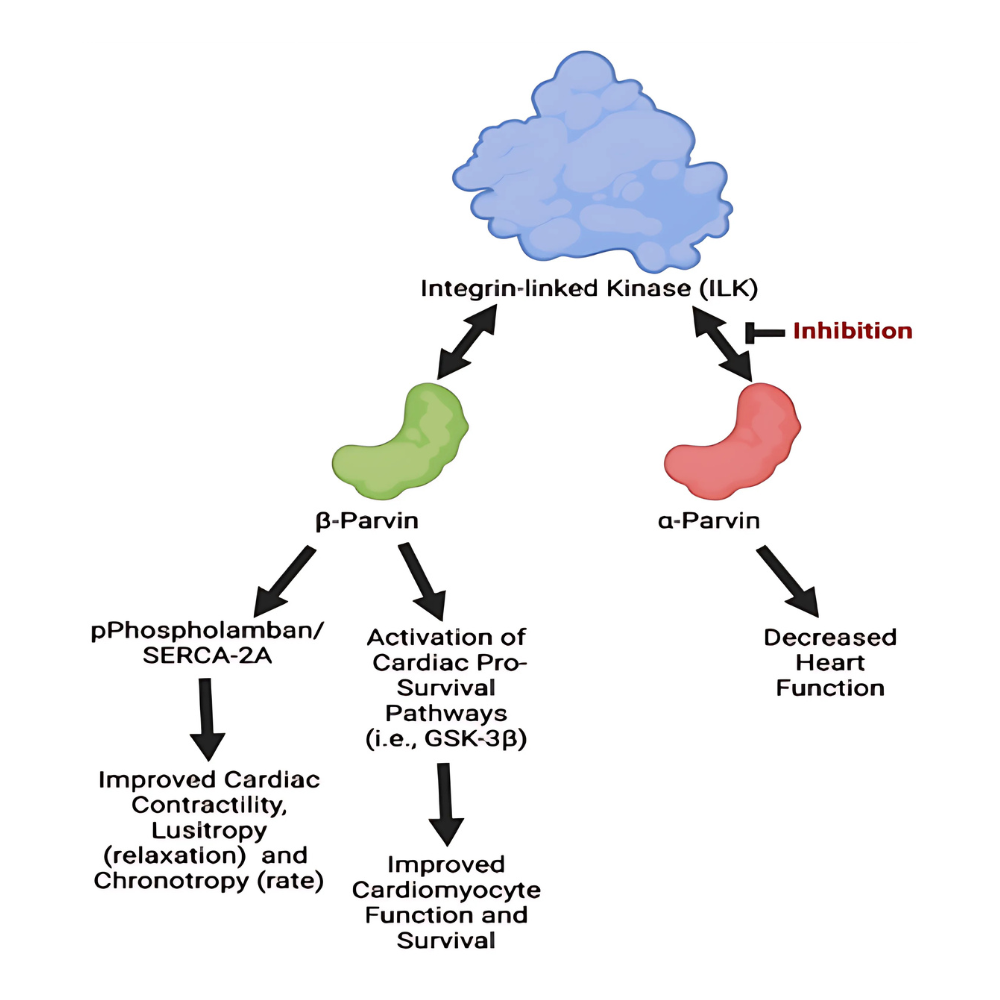Tech #776: Inhibitors of ILK:α-parvin as novel therapies for heart failure and cardiac fibrosis
Heart failure remains a leading cause of death and hospitalization in the developed world, with current treatments failing to reverse organ dysfunction or address untreatable cardiac fibrosis. The Coles and Maynes labs at SickKids are targeting the integrin-based mechanotransduction pathway—specifically the interaction between ILK and parvins in cardiomyocytes and fibroblasts—to develop novel therapeutics that address the root mechanisms of heart failure and fibrosis.
IP&C is seeking an industry partner to complete development & commercialize this therapeutic technology.
Technology Reference Number
#776
Inventors
IP&C Contact
Publications
Patents
Preparing to file a US provisional patent application
Category
Therapeutics
Keywords
Cardiac fibrosis, heart failure, cardiomyocyte, integrin-linked kinase, pathways, parvins
Background
Heart failure is the single largest contributor to morbidity and mortality in the developed world. Only half of patients survive five years following their initial diagnosis, even when using the most advanced medical and surgical treatments. In developed countries, heart failure affects 1-2% of the adult population. Compared to other medical conditions, this disease burden results in the highest annual rate and cost per patient of hospitalization. The direct cost alone of heart failure is projected to increase to $51 billion by 2030 in the USA, with indirect costs substantially higher. Current pharmacologic treatment approaches are limited to targeting symptomatic pathways without functional organ improvement, and suffer from dose-limiting side effects, such as hypotension. Evident in most forms of heart failure, cardiac fibrosis is currently untreatable and exacerbates organ dysfunction and accelerates patient mortality.
Integrin-linked kinase (ILK) is a key cardiac scaffolding protein involved in heart development, the transduction of mechanical stress between the extracellular matrix and the intracellular cytoskeleton, and the induction of pathways that promote cardiomyocyte survival.
Invention Description
The Coles and Maynes labs at SickKids have identified unique mechanisms involved in cardiomyocyte and fibroblast mechanotransduction (mechanical force sensing), targetable for the development of novel therapeutics for heart failure and cardiac fibrosis.
Their work focuses on the key interaction between the proteins ILK and parvins (α-parvin and β-parvin), which form a heterodimeric complex as part of the integrin-based mechanotransduction pathway present in both cardiomyocytes and fibroblasts.
These protein:protein interactions are of central importance to regulation of the actin cytoskeleton, calcium dynamics, and the activation of pro-fibrotic pathways. ILK’s interaction with β-parvin activates sarcoplasmic reticulum ATPase (SERCA- 2a), which augments calcium reuptake into the sarcoplasmic reticulum and prevents cytosolic calcium overload, a feature of advanced heart failure.
Additionally, the ILK:β-parvin interaction induces cardioprotective mechanisms including the myocyte growth stimulation and the prevention of myocyte death. ILK:α-parvin interactions decrease heart contractility, myocyte survival, and promote fibrosis. Research at SickKids demonstrated that inhibition of ILK:α-parvin binding rescues cardiac function, representing a novel therapeutic target for the treatment of patients with heart failure and fibrosis.
Commercial Applications
First-in-class drug targeting mechanotransduction pathways to treat cardiac fibrosis and heart failure. Owing to the importance of force sensing, inhibitors of the ILK:α-parvin interaction could be potentially developed as therapies for treating other diseases: arrhythmia, cancer.
Developmental Stage
A high-throughput screen (HTRF assay) was designed and implemented at Evotec SE to identify small molecule disruptors of ILK: α-parvin complexes. The HTS yielded ~30 compounds that showed acceptable potency (4µm – 60µm), tractability to medicinal chemistry enabling further optimization of promising compounds and limited or modifiable toxicity.

Figure 2.
HTS hit compound in cellulo validation, illustrating a reduction of ILK:parvin cellular complexes in cardiac fibroblasts indicated by reduction in proximity ligation assay signal (data shown for six compounds at 20uM).

Figure 3.
Figure 3. Diminished cardiac fibroblast migration with increase in compound concentration (data of single HTS hit shown).
Preliminary results have identified promising compounds that disrupted ILK: α-parvin complexes (Figure 2) and decreased cardiac fibroblast migration (Figure 3) in a concentration dependent manner. Medicinal chemistry activities, have refined the hits towards a common central pharmacophore and area of binding on α-parvin. Resulting in 3 short listed molecules with single digit µM binding and ability to disrupt the ILK:α-parvin complex (measured via multiple orthogonal assays) and favorable ADME/Tox characteristics.


